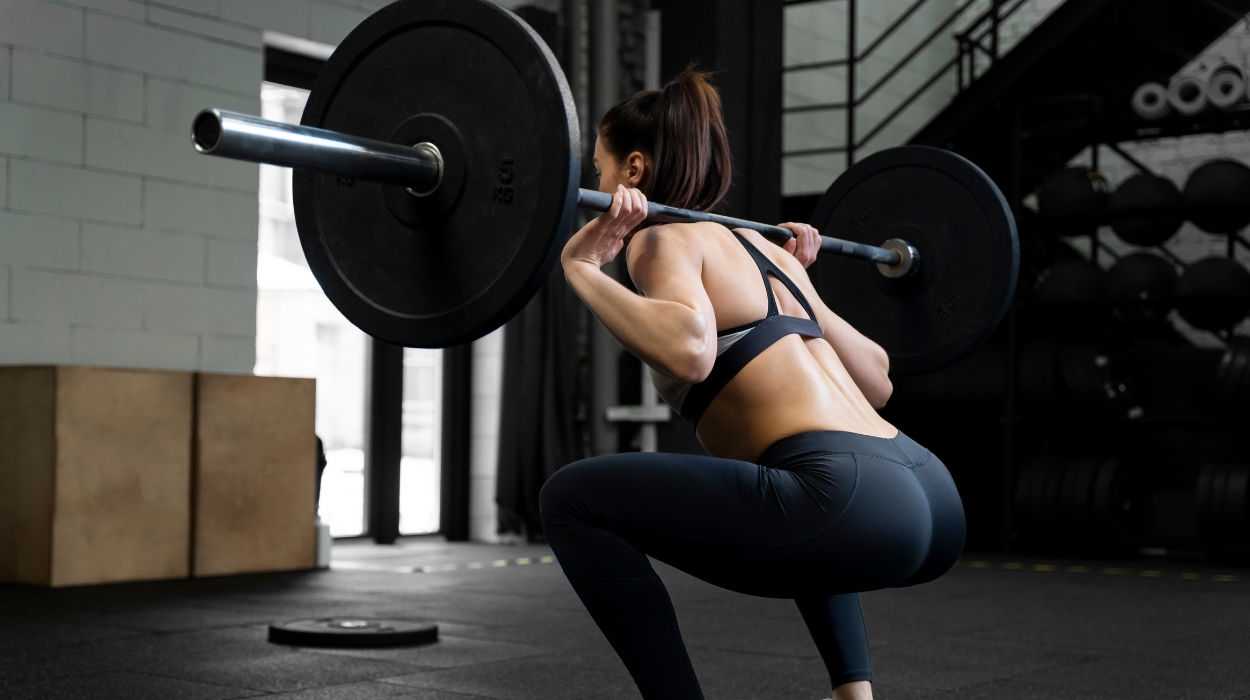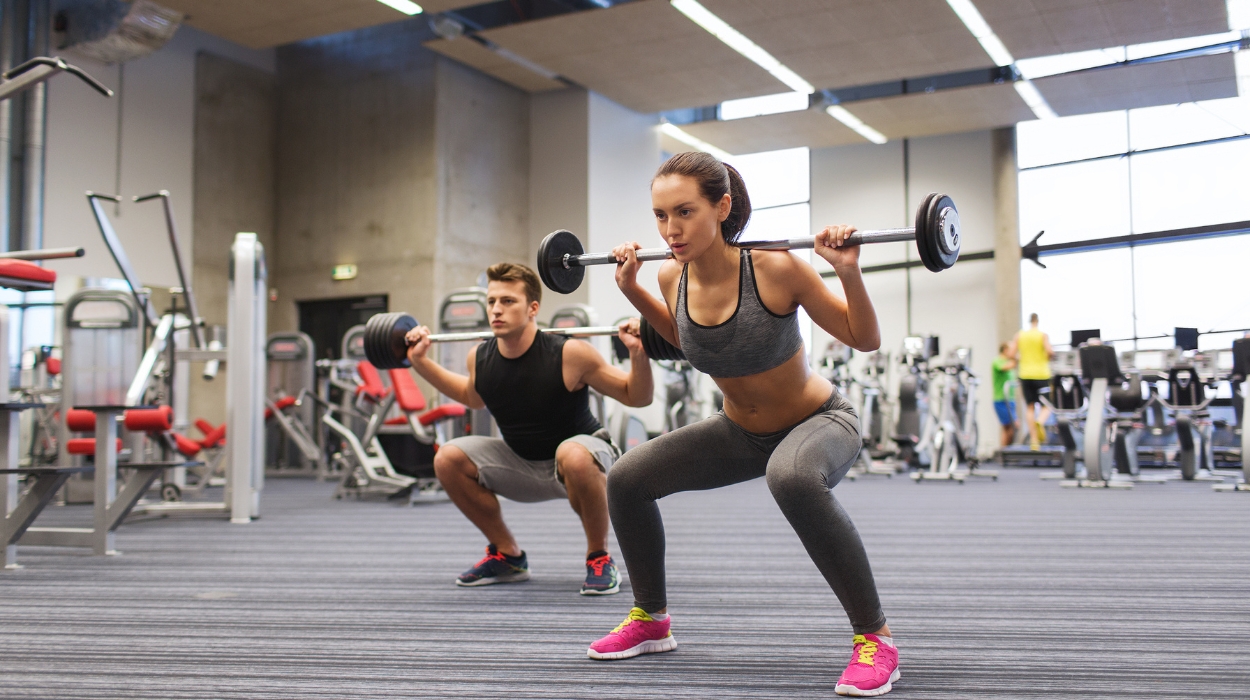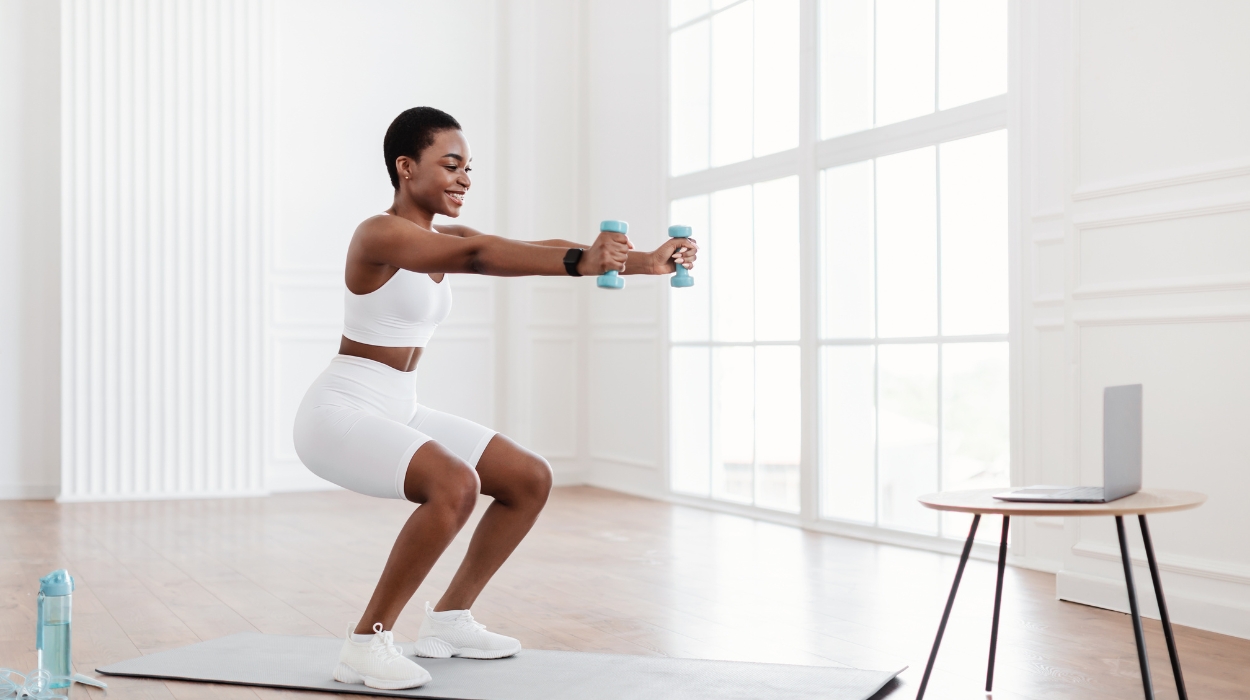
Everybody loves squats, but did you know that there are more than a few secondary benefits that these powerful fitness moves bring to the table?
There are so many ways to include squats in your fitness routine. Here are five data-backed reasons that we never miss leg day, and why you shouldn’t, either.
5 Major Health Benefits Of Squat
Squats are probably one of the most popular workout moves for lower body and core strength. A few of the benefits of squats for everybody include the following five key points:
Health Benefits Of Squats

The benefits of squats become more than obvious once you’ve had a chance to incorporate them into your exercise routine, and you can even enhance your effort with any of a number of fitness supplements for fat burn. Here’s a bit of background info on each of these factors to consider.
Squats Improve Your Posture
One successful research study[1] found that back squats were both a great diagnostic tool for correcting the posture of young athletes and an incredibly effective way to improve the posture of the study participants.
Unloaded back squat resistance training improved the athletic performance of the athletes in other activities, primarily as a result of the correction of the functional deficits that they exhibited before participating in this experiment.
Squats Strengthen Your Core
Squats can be used to strengthen so many muscles—they get your midsection working, and they’re great for building strong legs, core strength, and muscle mass.
Aside from pure calorie burn, core activation is probably one of the most prominent[2] squat benefits to consider when planning out your afternoon workout. Your lower body receives plenty of love, but your midsection and core are truly where most of the magic happens.
Squats Are Great For Balance And Stability
Bodyweight squats target the gluteals (glutes), quadriceps (quads), hamstrings, and calves, which makes it the ultimate functional exercise for improving your balance and trunk stability.
Studies show that the deeper you go[3] and the more that you’re able to supplement this effort with other aerobic exercises like a vertical jump in between each repetition (rep), the more profound this effect will be.
Balance and stability are both key factors that play into not only the exercise performance of your abdominal muscles but also muscle activation and coordination elsewhere in the body. When you can, we can always recommend opting into a deep squat, with feet slightly wider and even perhaps with the addition of a sports medicine ball or any other free weight.
Squats Are Low-Impact
Is it possible to lose fat and body weight without high-intensity activity and the toll that this type of compound exercise may eventually take on your body, joints, and knees?
A regular squat won’t damage the knee joint or the ankles. Low-intensity squat training[4] has actually been shown to improve knee and hip strength, enabling you to extend yourself further without buckling.
Squats Make Your Booty Pop
Do we even need to tell you this? If a round, tight butt is your goal, proper squat form is one of the most effective ways to tone the entire lower body, including your derrière.
While a basic squat truly is all that you need in this area, belt squats, split squats, and parallel back squats are all excellent alternatives for butt sculpting, as well as lower back strength in general.
How To Do A Squat Correctly?

Proper form when doing squats is everything in terms of the core muscle activation that you’re able to achieve. Bad form will both limit performance and the improvements that you see – luckily, basic squats are extremely easy to do correctly,[5] and they’re the most effective means of injury prevention at your disposal.
To do a traditional squat, start in a standing position with your feet shoulder-width apart on the ground, toes pointing forward and feet turned out to approximately 20 degrees, give or take. Make sure that you are rooting into the ground through your heels, not leaning into your toes or the balls of your feet.
Extend your spine and keep your chest up and out without rounding your back. While bracing your core muscles and your shoulders wide, descend slowly using only your knees, pushing down through the motion with your hips and inhaling. Your knees should remain shoulder-width apart and in alignment with your toes on the vertical.
As you reach your maximum squat depth, take a moment to pause and feel all of your different muscle groups working in your lower body. As you rise, sink back into your heels and push up through your stance.
The weight on the feet is one of the most important technical factors that make squats such an effective exercise—you should be able to feel the major muscles in your back working overtime by this point.
This description covers your basic squat, but you can actually increase your squat power outputs and make your workout routine much more intense by varying your squat depth, adding leg extensions and distance, trying weighted squats and jump squats, and playing around with the speed with which you squat.
Types Of Squat Exercises That We Love
If you’re bored and feel your athletic performance plateauing, you might be interested in trying one of many possible squat variations in order to extend your effort to reach many muscle groups:
- Quarter Squats: Instead of sinking to parallel, you’ll stop halfway and flutter – also known as a partial squat in some cases
- Single-Leg Squats: Your starting position will have you squatting from one leg
- Cross Squats: These will have you squatting with your legs crossed
- Goblet Squats: A goblet squat is a squat done while holding a weight up in front of you with both hands
- Split Squats: These will have you in a squatting position that looks a lot like a lunge, alternating each leg as you progress
- Wall Squats: Also known as wall sits—you’ll use the wall to support you as you suspend yourself
- Overhead Squats: An overhead squat is a squat with an overhead press after each rep; a back squat includes a set of barbell weights instead, and a front squat uses the same barbell as a back squat, only you’ll be holding the barbell in front of your head, not behind it
- Ballerina Squats: The starting position for a ballet squat spreads your feet out wider than usual, sometimes balancing on your toes
- Jumping Squats: You’ll jump straight up into the air after each squat rep
- Squats With a Machine Weight: Resistance exercise is often greatly intensified by incorporating the right equipment into your workout; you can increase your full squat power outputs by using a squat rack weight machine that lets you dial in exactly what your body is asking for at the gym
The variety that you have to choose from is truly limitless, just one more thing to love about this incredibly effective muscle-building activity. If you find yourself bored at the gym frequently, there’s always a new squat to try.
Bodyweight Squat: Pump Your Way Into A Healthier Tomorrow
Including any dynamic squat exercise is one excellent way to lose weight, activate your core muscles and leg muscles, and enjoy all the benefits of one of our favorite strength training exercises in the entire world.
Resources
- Myer, G.D., Kushner, A.M., Brent, J.L., Schöenfeld, B.J., Hugentobler, J., Lloyd, R.S., Vermeil, A., Chu, D.A., Harbin, J. and McGill, S.M. (2014). The Back Squat. Strength and Conditioning Journal, [online] 36(6), pp.4–27. doi:https://doi.org/10.1519/ssc.0000000000000103.
- Shinkle, J., Nesser, T.W., Demchak, T.J. and McMannus, D.M. (2012). Effect of Core Strength on the Measure of Power in the Extremities. The Journal of Strength and Conditioning Research, [online] 26(2), pp.373–380. doi:https://doi.org/10.1519/jsc.0b013e31822600e5.
- Esformes, J.I. and Bampouras, T.M. (2013). Effect of Back Squat Depth on Lower-Body Postactivation Potentiation. The Journal of Strength and Conditioning Research, [online] 27(11), pp.2997–3000. doi:https://doi.org/10.1519/jsc.0b013e31828d4465.
- Akagi, R., Sato, S., Hirata, N., Imaizumi, N., Tanimoto, H., Ando, R., Ryoichi Ema and Hirata, K. (2020). Eight-Week Low-Intensity Squat Training at Slow Speed Simultaneously Improves Knee and Hip Flexion and Extension Strength. Frontiers in Physiology, [online] 11. doi:https://doi.org/10.3389/fphys.2020.00893.
- Lorenzetti, S., Ostermann, M., Zeidler, F., Zimmer, P., Jentsch, L., List, R., Taylor, W.R. and Schellenberg, F. (2018). How to squat? Effects of various stance widths, foot placement angles and level of experience on knee, hip and trunk motion and loading. BMC Sports Science, Medicine and Rehabilitation, [online] 10(1). doi:https://doi.org/10.1186/s13102-018-0103-7.




